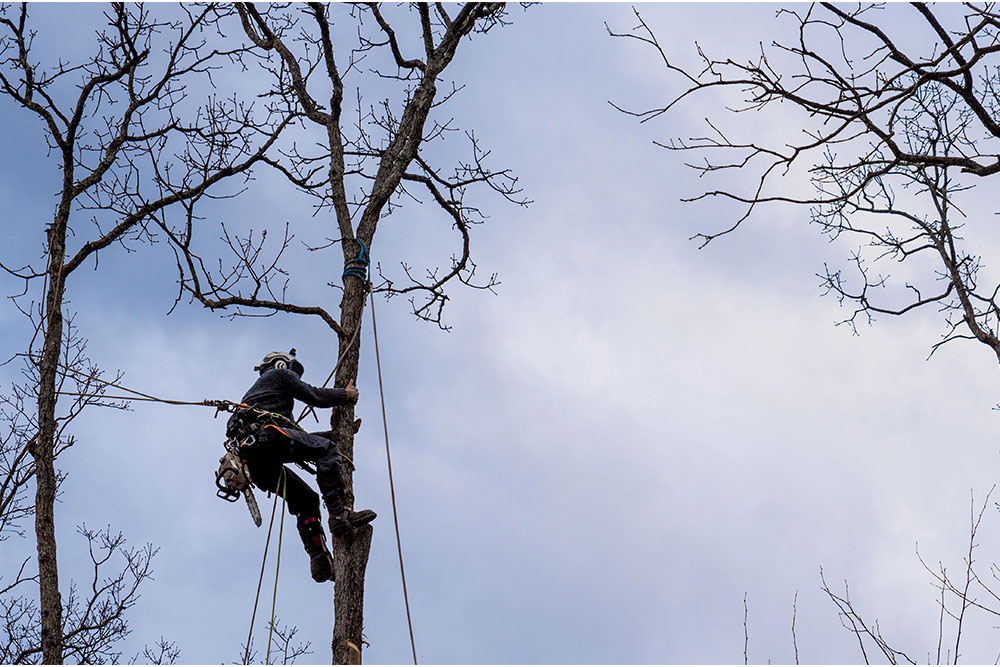What To Do After Cutting A Tree Branch

When you cut a tree branch, it is important to take certain steps to promote the health of the tree and minimize damage. Knowing what to do after cutting a tree branch can make a difference in how the tree recovers and how quickly it heals. Here are some of the proper techniques for tree care and when professional help might be needed to address any challenges that arise.
Leave the Cut Area Exposed
After cutting a tree branch, the first step is to leave the cut area exposed to air. This helps the tree to naturally begin the healing process. While you might be tempted to use a sealer or protective coating, it is generally not necessary unless the tree is in a high-risk area for infection or disease.
Tree wounds typically heal faster when they are exposed to air, allowing the tree’s natural defense mechanisms to kick in. However, it is important to make a clean cut so that the tree can heal without complications. For larger branches, you may need to take extra precautions to minimize the risk of infection or decay.
Avoid Using Tree Wound Dressings
Many people mistakenly think that applying a wound dressing or sealant to a tree branch after cutting it will help protect the tree. In reality, most sealants do more harm than good. They trap moisture, which can lead to fungal growth and disease, slowing down the healing process.
Tree wounds are best left untreated, as the tree’s natural processes will take over and seal the wound. In some cases, particularly with older or diseased trees, sealants may be useful, but this is a rare exception. Always consider the tree’s health and seek advice from an expert if needed.
Prune at the Right Time of Year
Timing is a key factor in proper tree care after cutting a branch. It is best to prune during the tree’s dormant period, usually in late winter or early spring. Cutting during this time reduces stress on the tree and encourages healthy regrowth in the coming months.
Pruning at the wrong time can cause the tree to lose more sap, weakening its overall structure. Avoid cutting branches during the peak growing season, as this can interfere with the tree’s natural processes and cause unnecessary damage.
Avoid Over-Pruning the Tree
Over-pruning can be just as harmful as cutting branches improperly. When removing branches, only remove what is necessary to improve the tree’s health or appearance. Removing too many branches at once can shock the tree and leave it vulnerable to pests and diseases.
In some cases, excessive pruning can stunt the tree’s growth or cause long-term damage. Always consider the tree’s size and health before removing branches, and leave enough foliage to support photosynthesis and overall tree vitality.
Monitor the Tree for Signs of Infection
After cutting a tree branch, keep a close eye on the area for any signs of infection or disease. If the cut becomes infected, the tree may begin to show symptoms like discoloration, oozing sap, or wilting leaves. Early detection of infection can help prevent further damage to the tree.
If you notice any unusual signs, it is important to act quickly. You may need to consult a professional tree care service to treat the infection and prevent it from spreading. The longer an infection goes untreated, the more difficult it may be to restore the tree to good health.
Consider Professional Tree Care Services
In some cases, it is better to seek professional tree care services after cutting a branch. A professional arborist can assess the overall health of the tree and determine if additional steps need to be taken. Professional services are especially important if the tree is large or in a risky location.
If you are uncertain about the best way to care for a tree after cutting a branch, contacting a specialist is a wise decision. Professionals have the tools and knowledge to handle the situation safely and effectively, helping with the long-term health of the tree.
Tree Care and Vegetation Management
After cutting a tree branch, it is important to monitor the tree’s health and take steps to promote recovery. If you are looking for expert assistance in managing your trees, Coleman Environmental Engineering, LLC can help. Our vegetation management services are designed to ascertain the health of your trees and overall landscape.
Contact us to discuss how we can assist with tree care, fire restoration, and other vegetation management needs. Let us bring our years of experience to support your property’s growth and safety.
